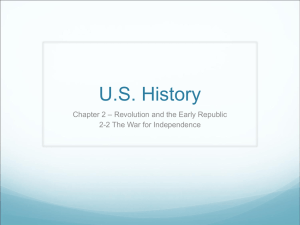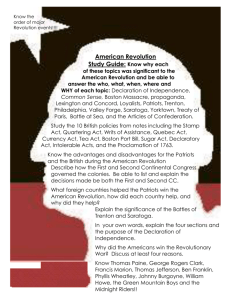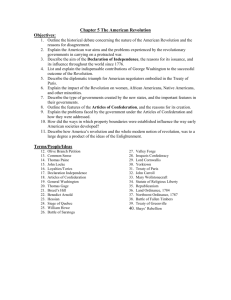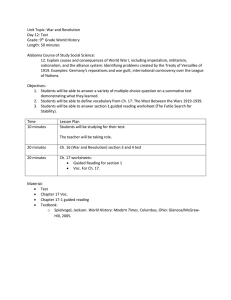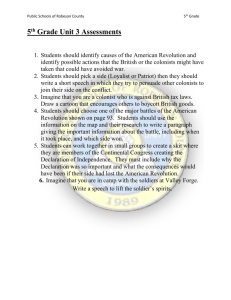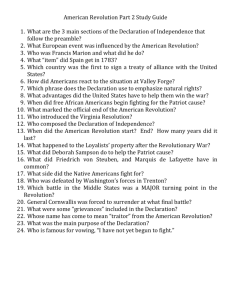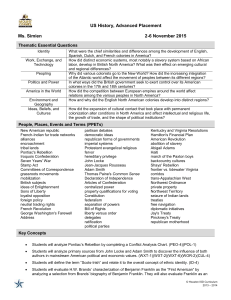Lesson Plans 26-30 October
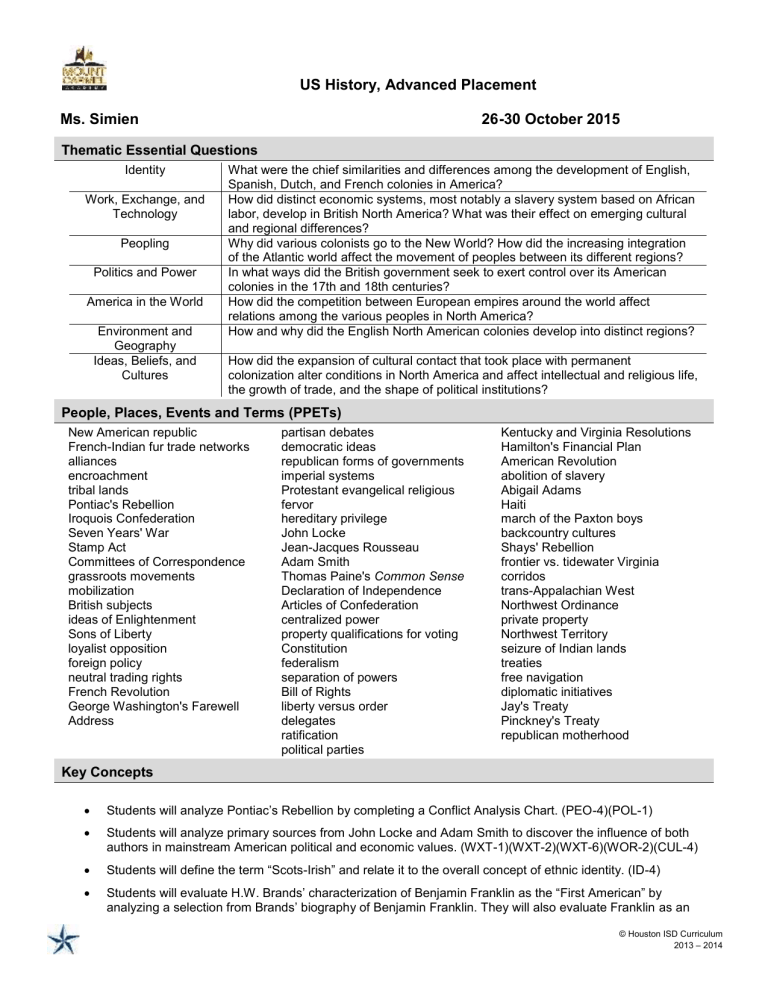
US History, Advanced Placement
Ms. Simien 26-30 October 2015
Thematic Essential Questions
Identity
Work, Exchange, and
Technology
Peopling
What were the chief similarities and differences among the development of English,
Spanish, Dutch, and French colonies in America?
How did distinct economic systems, most notably a slavery system based on African labor, develop in British North America? What was their effect on emerging cultural and regional differences?
Why did various colonists go to the New World? How did the increasing integration of the Atlantic world affect the movement of peoples between its different regions?
Politics and Power In what ways did the British government seek to exert control over its American colonies in the 17th and 18th centuries?
America in the World How did the competition between European empires around the world affect relations among the various peoples in North America?
Environment and
Geography
How and why did the English North American colonies develop into distinct regions?
Ideas, Beliefs, and
Cultures
How did the expansion of cultural contact that took place with permanent colonization alter conditions in North America and affect intellectual and religious life, the growth of trade, and the shape of political institutions?
People, Places, Events and Terms (PPETs)
New American republic
French-Indian fur trade networks alliances encroachment tribal lands
Pontiac's Rebellion
Iroquois Confederation
Seven Years' War
Stamp Act
Committees of Correspondence grassroots movements mobilization
British subjects ideas of Enlightenment
Sons of Liberty loyalist opposition foreign policy neutral trading rights
French Revolution
George Washington's Farewell
Address partisan debates democratic ideas republican forms of governments imperial systems
Protestant evangelical religious fervor hereditary privilege
John Locke
Jean-Jacques Rousseau
Adam Smith
Thomas Paine's Common Sense
Declaration of Independence
Articles of Confederation centralized power property qualifications for voting
Constitution federalism separation of powers
Bill of Rights liberty versus order delegates ratification political parties
Kentucky and Virginia Resolutions
Hamilton's Financial Plan
American Revolution abolition of slavery
Abigail Adams
Haiti march of the Paxton boys backcountry cultures
Shays' Rebellion frontier vs. tidewater Virginia corridos trans-Appalachian West
Northwest Ordinance private property
Northwest Territory seizure of Indian lands treaties free navigation diplomatic initiatives
Jay's Treaty
Pinckney's Treaty republican motherhood
Key Concepts
Students will analyze Pontiac’s Rebellion by completing a Conflict Analysis Chart. (PEO-4)(POL-1)
Students will analyze primary sources from John Locke and Adam Smith to discover the influence of both authors in mainstream American political and economic values. (WXT-1)(WXT-2)(WXT-6)(WOR-2)(CUL-4)
Students will define the term “Scots-Irish” and relate it to the overall concept of ethnic identity. (ID-4)
Students will evaluate H.W. Brands’ characterization of Benjamin Franklin as the “First American” by analyzing a selection from Brands’ biography of Benjamin Franklin. They will also evaluate Franklin as an
© Houston ISD Curriculum
2013 – 2014
US History, Advanced Placement
Ms. Simien 26-30 October 2015 embodiment of Enlightenment thought. (ID-1)(WXT-2)(WOR-2)(CUL-4)
Students will write an essay with a thesis statement for the DBQ from the 2005 AP U.S. History Exam: “To what extent did the American Revolution fundamentally change American Society?” Students will be required to address changes and/or continuities in American society accompanying the American
Revolution, and they will be required to situate these changes and/or continuities within larger global processes.
Students will compose a set of six footnotes identifying Enlightenment ideas and diplomatic strategies in the
Declaration of Independence. They will also summarize the assumption of thirteen independent States found in the document. (ID-1)(WOR-2)
Students will compare and contrast the Articles of Confederation with the Constitution using a Comparison
Chart.
Period III (1763-1800)
Monday, 26 October 2015
1. Engage and Connect : How did the American
Revolution start.
2. Introduce New Learning:
3. Guided and Independent practice:
4. Close the Lesson and Assess Mastery:
Tuesday, 27 October 2015
1. Engage and Connect : What do you know of the
Declaration of Independence?
2. Introduce New Learning: Lecture
3. Guided and Independent practice: Primary Source:
Declaration of Independence; Students will view the original document and read two famous historians view of the Declaration
4. Close the Lesson and Assess Mastery: Ask students if their perception of the DoI changed after reading the different interpretations
Wednesday, 28 October 2015
1. Engage and Connect : Describe the three different reactions to the American Revolution
2. Introduce New Learning: Lecture
3. Guided and Independent practice: Primary Source:
Packet: Loyalists
Checks for Understanding
Ask students to give you a response signal such as Fist-to-
Five to show their level of familiarity
Visually scan the room to ensure that students are focusing on the vocabulary and perhaps adding notes or highlighting.
Monitor students’ nonverbal cues, talk, and writing to address any areas of confusion.
Check for student answers to the questions posed. Affirm positive responses and clarify
© Houston ISD Curriculum
2013 – 2014
US History, Advanced Placement
Ms. Simien 26-30 October 2015
Period III (1763-1800)
4. Close the Lesson and Assess Mastery: Have your opinion about loyalist changed by the primary sources
Thursday, 29 October 2015
1. Engage and Connect : Why is Saratoga considered a turning point of the America Revolution
2. Introduce New Learning: Lecture
3. Guided and Independent practice: Primary Source and Secondary Sources: Saratoga
4. Close the Lesson and Assess Mastery: Students will be asked again to explain why is Saratoga considered a turning point of the American Revolution.
Friday, 30 October 2015
1. Engage and Connect : Halloween Lecture
2. Introduce New Learning:
3. Guided and Independent practice:
4. Close the Lesson and Assess Mastery:
Checks for Understanding
Circulate the room to ensure students are completing tasks correctly. Provide feedback and clarify any misunderstandings.
Redirect, reteach, and extend assistance to those who need it.
If time permits, cold call [randomly] on individual students to share their answers to the exit ticket.
© Houston ISD Curriculum
2013 – 2014
